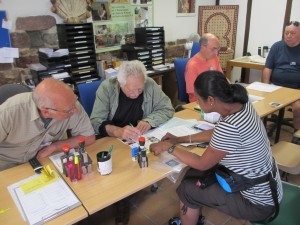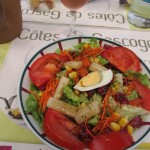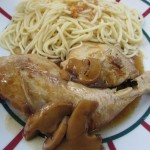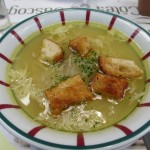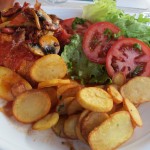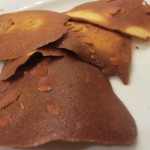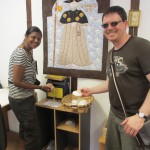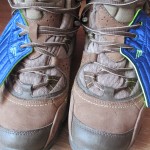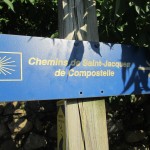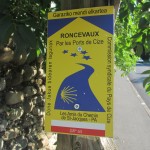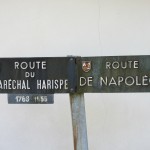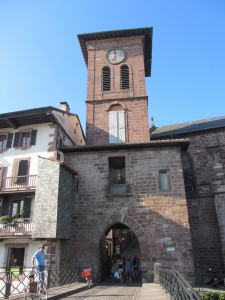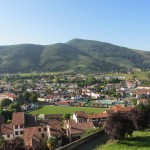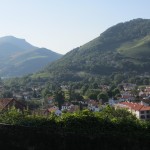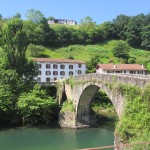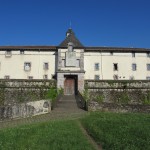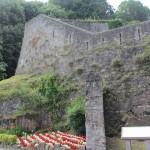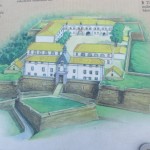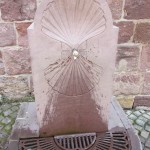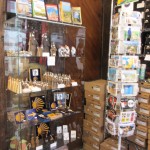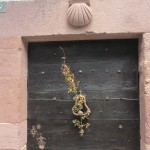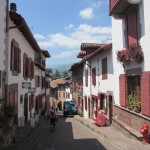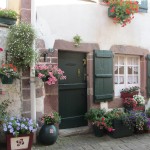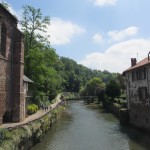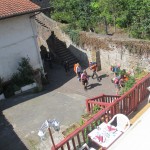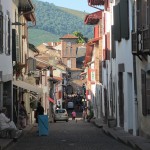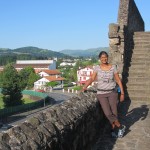Chapter 8 – Getting things ready for the Camino (Day 0)
When we decided to do the first part of the Camino (until Logrono) we had decided to book our hotels and arrange for a baggage pickup through a British travel company. Before starting the walk, we were just finishing a business trip/vacation from Europe so it made sense to have our suitcases moved and carry a daypack with necessary things for the day. Having pre-booked our hotels didn’t mean that we would be driven around; it was our responsibility to get to each stop at the end of the day and check into the accommodation that was set months ago.
The maps from the travel company were identical to the main Camino route that every pilgrim undertakes. Since I was going back to the Camino in late summer this was a trial to see if I could do this all on my own as I was a bit nervous traveling by myself as a person with type1 diabetes. Not that I needed hand holding but for low sugars, emergencies as I was pretty nervous about climbing the Pyrenees alone as I heard it’s pretty hard and so it made sense for me to have my partner with me just in case. He was happy and willing and he also felt that he hadn’t done a walking holiday in many years and he felt it was time to do one together.
Our adventure started together – see Chapter 5 (Getting to Saint Jean Pied de Port). Once we got to Saint Jean Pied de Port (SJPP) the trick was to find out hotel with our massive suitcase dragging through the street as there were taxis. We asked for our hotel name and we ran into a lady who spoke very good English and pointed to the old town. Perhaps they are used to people with big backpacks not massive suitcases like we were moving into an apartment, it did look funny. The heat in the midday was exhausting but not more than a kilometer in the old part of the town we found our beautiful hotel and our room had an amazing balcony overlooking the village and the foothills of the Pyrenees.
Leaving the luggage in the room we took the opportunity to have lunch in the town as it was closer to 2pm. There were travelers from all over Europe, some walking the Camino and some with family taking few days off to do bit of hike and enjoy the village. We decided to try the Pilgrim menu as most bars, restaurants, alburges along the Camino serve a set course meal with appetizer, main course with dessert and some include a glass of wine or beverage of your choice all under 10 euro. We were recommended to try the Irouleguy rose wine which was produced locally. The wine was light and crisp, refreshing with perfect with our stewed chicken with mushrooms, delicious!
Irouleguy, a local wine – Irouleguy was already being produced in the 14th and 15th centuries by canons in Roncevaux (Roncesvalles). The vineyards extend over 120 hectares and across some twenty communes, producing both reds and roses. This Basque wine obtained “appellation d’origine” status in 1970.
After lunch we went to the tourist office to get our passports. It was hard to explain the feelings inside as I was about to embark on something totally different and my life after this experience would change forever. The tourist office is run by many volunteers who are so happy to see you and their first question was what language we spoke so they could direct us to the right table. A lovely gentleman greeted us so kindly and asked us few questions like where we had come from as it was also for data collection and was happy to see so many Canadians had come through, none that day. We signed our name on the register, explained about two existing paths to get to Roncesvalles and he prepared our passports.
When I started my Camino training in March I decided that I was going to climb the Pyrenees – it was something that I always wanted to do, conquer a summit in my life. And when I heard there were two paths, one through the mountain called Route de Napolean 25.1 km (adjusted for climb 32 km) summit 1450m and another route called Route Valcarlos 24 km (adjusted for climb 29 km) summit 900m there was no question. I’ve heard the scenery is spectacular despite the arduous climb.
I also thought it was automatic that you would get your Camino shell after you register but it’s not a requisite that everyone carries one. It was a personal decision for everyone. So we decided to carry one so we donated some money in a basket and select our own shell. It was quite special for me.
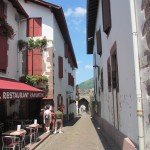
This shell would walk the entire trip with me and share all my burden, happiness, all the beauty along the way. So I just didn’t pick the one on the top but found one that would be my companion. It was already threaded so I all I had to do was to tie to securely on my pack when I got back to the room.
After our trip to the tourist office we explored the town – see chapter 6 (Camino Santiago Passports, Stamps & Symbols). We also decided go for a walk to familiarize ourselves to see the Camino path and where to pick up Route de Napoleon so that we wouldn’t miss it the next day with all the excitement. It was quite and non descript but the hair on my back still stoop up as I was would be on that path in the next 12 hours and my exciting journey would start.
Went back to the room and got our packs and boots ready for the morning as our plan was to start as early as possible. After another amazing dinner at our hotel overlooking the mountains we retired to our room setting the alaram for 6am.
Thought of the day: All this preparation, I am on autopilot!
Buen Camino!

